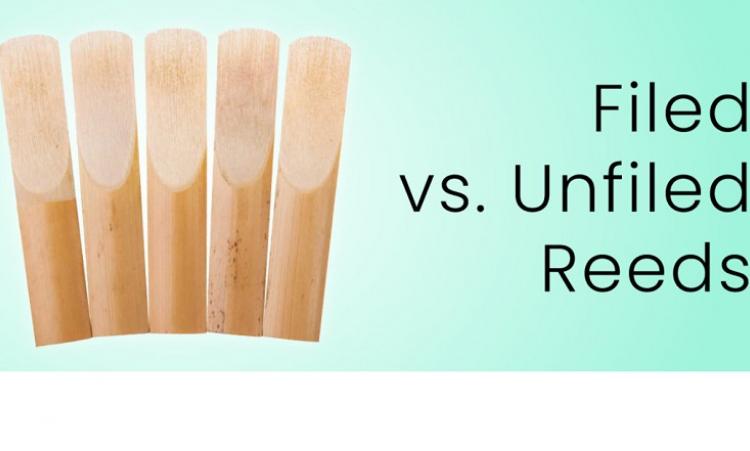Some "Good Information to Know" from Cosmo Music
Choosing a File Cut to Suit your Mouthpiece
There are many variances on types of reeds, and one decision you will have to make is choosing between a filed or unfiled reed to suit your mouthpiece. This decision comes down to personal preference and is subjective. Some may focus on the style of music. For example, classical music may call for a darker, more tonal sound, while you may desire a brighter, edgier sound for pop or jazz.

Choosing a Filed Reed
Filed or French Filed Cut reeds have an extra strip of cane removed in a straight line just below the vamp allowing for more flexibility and a faster response time. Often, players who use moderately resistant and darker sounding mouthpieces prefer filed reeds. The file allows these resistant mouthpieces to blow more freely and produce a brighter tone and that's more focused.

Choosing an Unfiled Reed
Also referred to as American Cut, regular reeds, or single cut are identified by their distinct “U” shape at the bottom of the vamp, with no line. This produces a more powerful tone. Players who use easy-blowing and moderate to bright mouthpieces often prefer unfiled reeds. Unfiled reeds give the player a darker tone and more resistance, producing a more robust sound and full sound.
Finding the Sweet Spot
Finding the right sweet spot for your tone may require some experimenting depending on your play style and personal taste. Here are some examples of filed and unfiled reeds. Happy playing!
Please click HERE to see the examples of Filed and Unfiled Reeds









